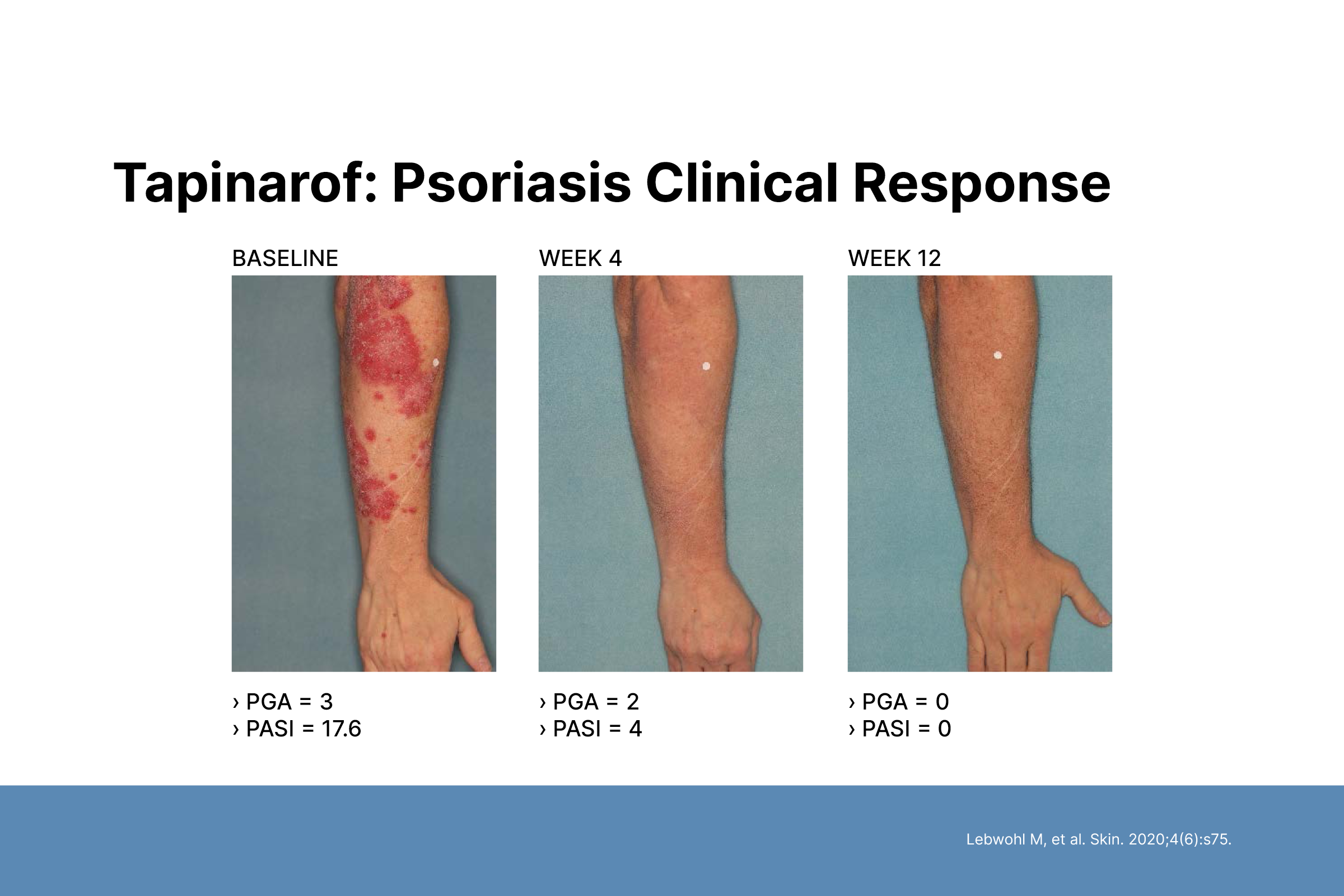New Topical Therapies for Psoriasis and Atopic Dermatitis
Tina Bhutani, MD, SAS, Associate Professor, Department of Dermatology, Co-Director, Psoriasis and Skin Treatment Center Director, Dermatology Clinical Research Unit, UCSF
December 2022
Dr. Bhutani presented new topical therapies for psoriasis and atopic dermatitis, including tapinarof, roflumilast, and ruxolitinib. Because the majority of patients have mild-to-moderate skin diseases that can be treated with topical therapy, these new topical agents may offer more clinical options for patients who are not candidates for biologics or oral inhibitors.
Psoriasis and atopic dermatitis are undertreated. Nearly 42% of psoriasis patients were treated with topical therapies. Whether topical therapy is appropriate or not, most patients are more comfortable using topicals. Thus, Dr. Bhutani says dermatologists need more topical therapies in their toolbox.
For treating chronic skin disease, clearing the disease quickly gives patients more symptomatic control.
Historically, skin clearing begins with topical steroids and is maintained with non-steroids. Long-term maintenance of chronic skin disease is a cycle between clearance and maintenance because flare-ups send the patient back into the clearance phase. Traditional maintenance strategies include rotational therapy and sequential therapy.
Dr. Bhutani presented the results from recent clinical trials showing that tarpinarof and roflumilast work quickly and efficaciously with no serious adverse events. Ruxolitinib, a selective JAK1/JAK2 inhibitor, was recently approved for atopic dermatitis. However, ruxolitinib has a class-boxed warning after the FDA review of oral JAK inhibitor treatments for inflammatory conditions and may require discussion with the patient.
These new topical therapies can be expensive, leading to limited access. Dr. Bhutani believes it’s great to have new treatment options, but whether they can be used by patients remains uncertain and an issue that needs to be addressed.


